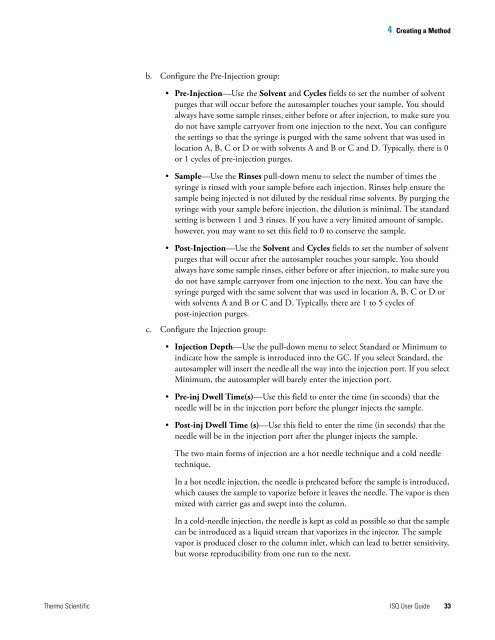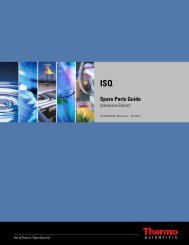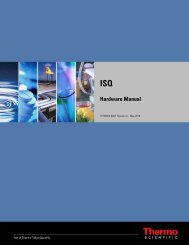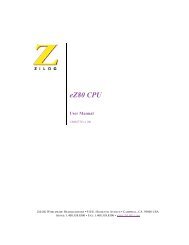ISQ User Guide - Write Frame of Mind
ISQ User Guide - Write Frame of Mind
ISQ User Guide - Write Frame of Mind
You also want an ePaper? Increase the reach of your titles
YUMPU automatically turns print PDFs into web optimized ePapers that Google loves.
. Configure the Pre-Injection group:<br />
4 Creating a Method<br />
• Pre-Injection—Use the Solvent and Cycles fields to set the number <strong>of</strong> solvent<br />
purges that will occur before the autosampler touches your sample. You should<br />
always have some sample rinses, either before or after injection, to make sure you<br />
do not have sample carryover from one injection to the next. You can configure<br />
the settings so that the syringe is purged with the same solvent that was used in<br />
location A, B, C or D or with solvents A and B or C and D. Typically, there is 0<br />
or 1 cycles <strong>of</strong> pre-injection purges.<br />
• Sample—Use the Rinses pull-down menu to select the number <strong>of</strong> times the<br />
syringe is rinsed with your sample before each injection. Rinses help ensure the<br />
sample being injected is not diluted by the residual rinse solvents. By purging the<br />
syringe with your sample before injection, the dilution is minimal. The standard<br />
setting is between 1 and 3 rinses. If you have a very limited amount <strong>of</strong> sample,<br />
however, you may want to set this field to 0 to conserve the sample.<br />
• Post-Injection—Use the Solvent and Cycles fields to set the number <strong>of</strong> solvent<br />
purges that will occur after the autosampler touches your sample. You should<br />
always have some sample rinses, either before or after injection, to make sure you<br />
do not have sample carryover from one injection to the next. You can have the<br />
syringe purged with the same solvent that was used in location A, B, C or D or<br />
with solvents A and B or C and D. Typically, there are 1 to 5 cycles <strong>of</strong><br />
post-injection purges.<br />
c. Configure the Injection group:<br />
• Injection Depth—Use the pull-down menu to select Standard or Minimum to<br />
indicate how the sample is introduced into the GC. If you select Standard, the<br />
autosampler will insert the needle all the way into the injection port. If you select<br />
Minimum, the autosampler will barely enter the injection port.<br />
• Pre-inj Dwell Time(s)—Use this field to enter the time (in seconds) that the<br />
needle will be in the injection port before the plunger injects the sample.<br />
• Post-inj Dwell Time (s)—Use this field to enter the time (in seconds) that the<br />
needle will be in the injection port after the plunger injects the sample.<br />
The two main forms <strong>of</strong> injection are a hot needle technique and a cold needle<br />
technique.<br />
In a hot needle injection, the needle is preheated before the sample is introduced,<br />
which causes the sample to vaporize before it leaves the needle. The vapor is then<br />
mixed with carrier gas and swept into the column.<br />
In a cold-needle injection, the needle is kept as cold as possible so that the sample<br />
can be introduced as a liquid stream that vaporizes in the injector. The sample<br />
vapor is produced closer to the column inlet, which can lead to better sensitivity,<br />
but worse reproducibility from one run to the next.<br />
Thermo Scientific <strong>ISQ</strong> <strong>User</strong> <strong>Guide</strong> 33






